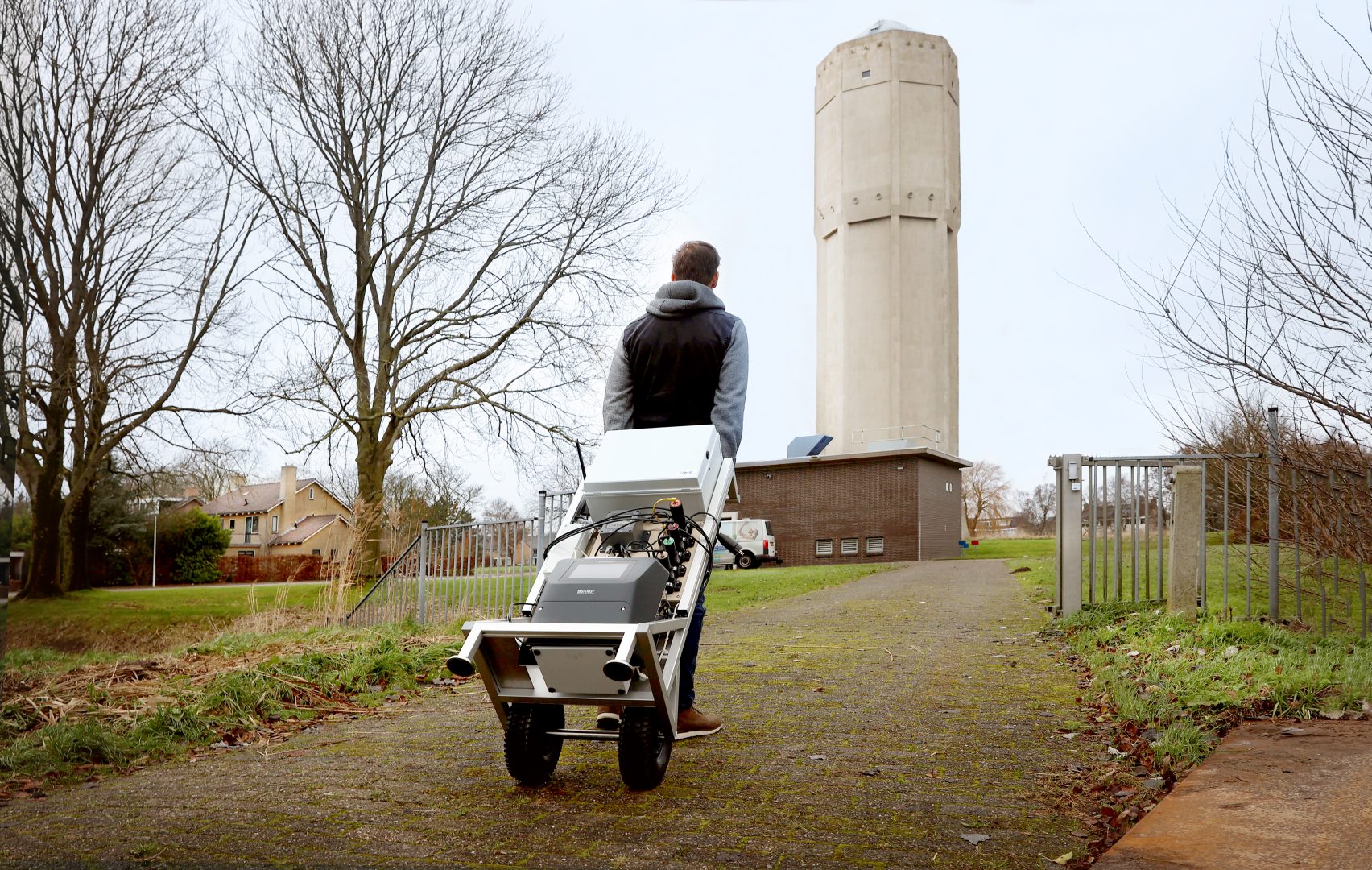
By: Eline te Velde
The Mobile Drinking Water Laboratory of Vitens
When you turn on the tap in the Netherlands, you can rest assured that the drinking water is tasty and safe. But how do we know if the water is of good quality? Adrie Atsma is research leader in microbiology and diagnostics at the Vitens Water Expertise Center. He explains how Vitens measures the quality of our drinking water with a mobile drinking water laboratory (MoDriLab).
“It is nothing more than a hand truck,” says Adrie when describing what the mobile drinking water laboratory looks like. “The system is flexible, so you can easily connect another sensor. Furthermore, it is very user-friendly, you need power and reads the data almost immediately.” MoDriLab measures the biological, physical and chemical properties of water. Consider, for example, chlorine, pH, turbidity and bacteria.
Continuous monitoring
Vitens uses sensors to continuously monitor the quality of drinking water. “Normally we take samples of the water and analyze them in the laboratory. This takes a lot of time. You only know that something is wrong when you receive the test result. Meanwhile, the water is pumped into the pipes.” By using sensors, Vitens has a live image of the water quality. “This way we can see in real time exactly what quality we deliver.”
The benefits of using sensors go beyond measuring water quality, Adrie explains. “With the sensors we can monitor the water very precisely. When we measure a small peak in hardness at a production location, we encounter this peak again a few hours later at a distribution node. With that information we can accurately control our hydraulic models.”
Flow cytometer
MoDriLab's mobile sensors make it possible to measure at very specific locations, for example during work on a pipeline or in case of production problems. The MoDriLab is currently being deployed at a water reservoir, where drinking water from various production locations is temporarily stored. “There we measure the effect of high outside temperatures on the water quality of the water in the reservoir. The reservoir is outside and we want to know what exactly happens when the sun shines on it all day long. We use mobile sensors to measure, among other things, the cell numbers and the physical quality of the drinking water.”
The cell numbers are measured with a flow cytometer. This produces interesting results, says Adrie: “We have previously carried out online flow cytometer measurements at other reservoirs. Here we saw the cell numbers increase at certain times. We were able to relate this increase to the filling process of the reservoir. This insight allows Vitens to adjust the filling process of the reservoir to keep the cell numbers in the reservoir low.”
Supplement
There has now been approval for the development of a second MoDriLab. “We are going to organize it differently. The hand truck is too wide and cannot climb every staircase. Version two will be smaller, I think they will be separate suitcases.” Adrie indicates that there are also wishes regarding the sensors, because at the moment it is not really possible to detect fecal contamination with sensors. “The problem is that we find – fortunately – very few contaminants such as E. coli in Dutch drinking water. So if something goes wrong, the concentrations are very low. So low that a sensor doesn't pick it up.”
Adrie concludes that online sensoring does not replace laboratory analysis, but that it is a nice addition. “The greatest added value of online sensoring is that we can now predict water quality differences very accurately. If we see a peak or pattern in the data, we know exactly when and especially where to take a sample. The quality of our drinking water is good and very stable. The trick is therefore to test this quality with lab measurements during a water quality change. Hopefully online sensors such as MoDriLab can contribute to this.”